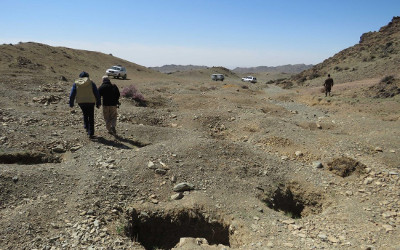AKIPRESS.COM -  Over the last two decades, Mongolia’s mining industry has supported the country’s economic and industrialization agenda, catapulting the country to one of the world’s fastest growing economies in 2013, The Asia Foundation says.
Over the last two decades, Mongolia’s mining industry has supported the country’s economic and industrialization agenda, catapulting the country to one of the world’s fastest growing economies in 2013, The Asia Foundation says.
According to government statistics, mining and quarrying accounted for 23 percent of GDP in 2014, and by May 2015, mineral exports accounted for 87 percent of total exports. However, the industry’s rush to expand has come at a significant cost to the environment and the country’s fragile natural resources.
Mining exploitation has led to rapid soil erosion and degradation of both pastureland and watercourses, and as a result, has drastically altered the traditional livelihoods of local agrarian communities, many of whom still rely on conventional animal husbandry. This has created an “unwanted new world” which has forced local communities in many areas to make a tough choice: either to adapt and tolerate or to flee and seek refuge in urban centers.
To make matters worse, an ongoing economic downturn due to a significant drop in foreign direct investment in the mining sector, as well as low commodity prices globally, has fueled a rise in unemployment, and resulted in an increase in small-scale artisanal mining (ASM) activity in the country. There are an estimated 100,000 small-scale artisanal miners who work independently and comprise nearly 20 percent of Mongolia’s rural workforce. In 2015, the ASM sector (including some small companies) sold 6.7 tons of gold to the Bank of Mongolia, which represented an impressive 46.3 percent of total gold-mining sales.
Although legalized, ASM remains a widely controversial issue here. Rangeland degradation, increased desertification, water pollution, localized mercury use, reduced river levels, and landscape destruction are the main environmental issues associated with ASM. Illegal artisanal mining in the country’s Protected Areas is an increasingly contested issue.
The main issues surrounding ASM lie on two fronts. From a social perspective, traditional artisanal miners work in incredibly harsh and hazardous conditions, usually at great expense to their health. On the environmental front, thousands of unfilled deep pits, tunnels, and waste – a consequence of this type of mining – are degrading the land, soil, and hydrology, and posing a real danger to animals and people.
According to the Mongolian government, 40 percent of abandoned mining degraded land can be attributed to ASM. In particular, extensive areas of open shafts, compacted soil, loss of vegetation and topsoil, and polluted water all degrade the value of pasturelands and impact wildlife. But for the artisanal miners who lack the necessary knowledge, financial resources, and technical capacity, rehabilitating the land themselves is in most cases challenging and prohibitive.
The Asia Foundation’s Engaging Stakeholders in Environmental Conservation Project (ESEC II), funded by the Swiss Agency for Development and Cooperation (SDC), has been working since 2013 to mitigate the negative environmental impacts of past and present mining practices. The project promotes the development of sound environmental practices at the local level to ensure that communities live in a healthy and safe environment and, at the same time, ensures that the employment opportunities that ASM creates are not taken away.
Throughout 2014‑15, The Asia Foundation supported 17 frugal rehabilitation demonstration projects, and in 2016, through a co-financing initiative, local governments implemented 13 additional frugal rehabilitation projects. Today, a total of 210 hectares of land has been rehabilitated by 23 ASM NGOs across the country.
By the end of the project, ASM communities in at least in 25 districts across Mongolia have the experience and capacity to do rehabilitation of ASM degraded the land. In 2016, 13 more local governments came on board, and co-financed 13 projects rehabilitating 70 hectares of ASM-degraded land. If this approach continues, Mongolia will not only see a more secure environmental future, but also an improved economic one.
